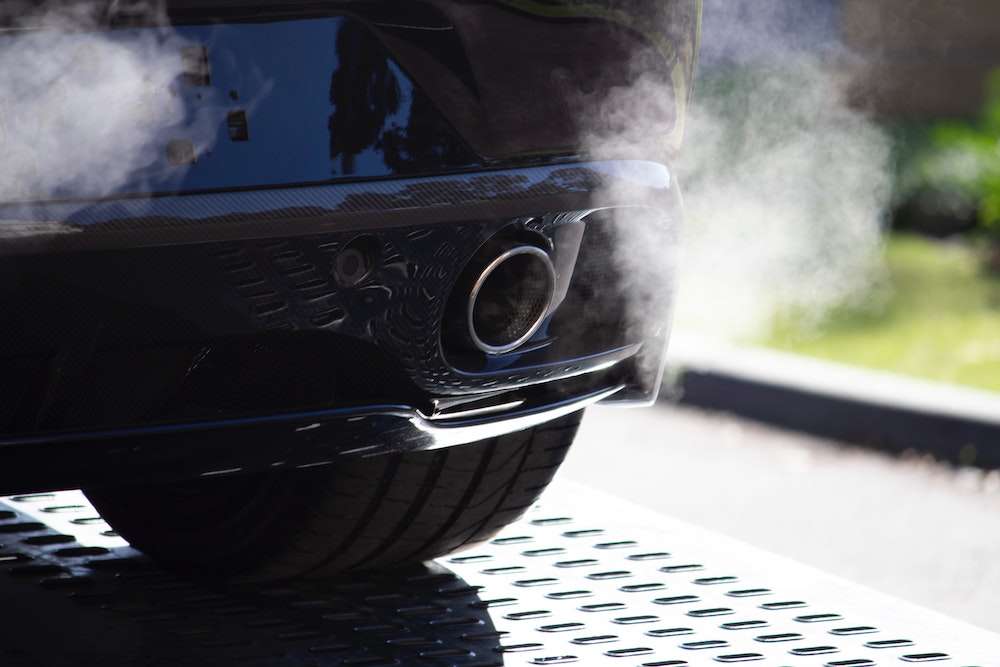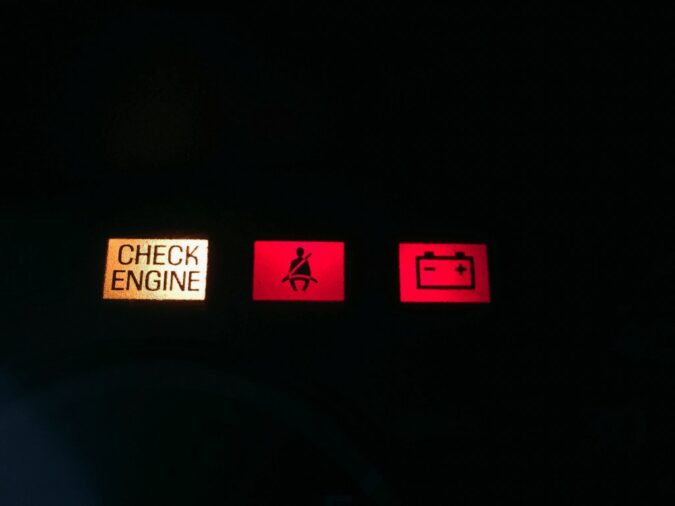Have you diagnosed your car and you’ve found out that you have the P0036 code? If that is the case, then you are at the right place because we are going to cover a lot when it comes to this problem and how to overcome it quickly and effectively.
Having a situation like this with the check engine light can be a really annoying thing to deal with. Especially if you are new to cars and do not have the right background. But you should not worry. Everything is possible when there is a desire for learning and personal improvements.
I know a ton of people who didn’t have a clue when they were starting out but nowadays they can write you a book on how to fix a P0036 code or any code that is out there. This is why you should pay close attention and try to get the most essential piece of data you will need in order to solve this problem as quickly as possible.
First, we are going to learn the basics of car diagnostics, then we will focus on the basics of the O2 sensor and the P0036 code. To understand more about what this code means and where to look for the right causes. This is why we will also going to elaborate more on the causes as well as the symptoms associated with this code. Later on, we will learn how to diagnose and fix the problem with your car. So, if you want to learn more, follow along.
Introduction To Car Diagnostics
Now before we dive into the problem and learn more about the P0036 code, let’s first introduce ourselves to the topic. I bet that there are a ton of people reading this article who lack a basic grasp of information when it comes to car diagnostics.
As you probably know modern cars are not like cars back in the day. Back in the day, everything was as simplest as it could get. There were no sensors, computers, and other complexities.
Mechanics simply relied on their knowledge and skills accumulated through the years of work and become able to diagnose complex problems like in our case.
Back in the day, the mechanic would tweak the carburetor a little bit, a little bit of valve adjustment, and call it a day. Nowadays, things are far more complex. We have the main computer in our car which is known as a Powertrain Control Module or PCM.
And in the car, a ton of sensors are communicating with this unit. Including the O2 sensor like in our case with the P0036 code. And is up to you to get a proper diagnostics tool and diagnose a problem with this specific sensor.
This tool is known as an OBD2 scanner. With this tool, you basically get access to the car computer and you will be able to diagnose all the different codes. Then based on the data that you get, you will be able to dive deeper and find the culprit to this problem.
And for this, you will need another tool also known as a multimeter. The multimeter will tell you if the O2 sensor as in our case is performing as it should and if this sensor is causing the P0036 code.
What Is A O2 Sensor And How It Works?
Now before we learn more about the P0036 code and understand what it means, let’s first learn more about the O2 sensor. As you probably are aware, this code is connected to this sensor and is telling us that it malfunctioned in a certain way. But what is the O2 sensor in general?
Well, an O2 sensor basically is a probe that is installed into your exhaust. This probe has a special task. The task of the O2 sensor is to measure the flow of oxygen in the exhaust pipe.
Allowing to measure the concentration of oxygen in the exhaust will allow the PCM to maintain the air to fuel ratio in your vehicle. Without this oxygen sensor being in good shape, your car will struggle and you will face a ton of symptoms down the alley. So, you don’t want that to happen.
This is why you need to understand the importance of this component and make sure that this component does perform well and your engine runs smoothly.
Another thing important to note is that this sensor is located on the exhaust and each of the banks has two O2 sensors mounted to it.
One before the catalytic converter and one after the catalytic converter. The first sensor is known as an upstream sensor, while the one that comes after the catalytic converter is known as a downstream sensor. But what is the P0036 code and what does it mean? Well, that’s what we are going to discuss in the following chapter in detail.
P0036 HO2S Heater Control Circuit (Bank 1 Sensor 2)
Now as we covered the basics of car diagnostics as well as the basics of the O2 sensor, we can now move on to other topics. Namely, the focus of our article is the P0036 code. Let’s learn what this code means.
The basic definition of this code is “P0036 HO2S Heater Control Circuit (Bank 1 Sensor 2)”. But what does this means?
Well, this means that you have a problem with the electrical circuit on the downstream O2 sensor on bank 1, which is sensor number 2.
If you didn’t know, every O2 sensor has a heater element inside of it. This heater element allows this sensor to get up to proper working temperature so you don’t feel any symptoms such as poor engine work and the engine not struggle after startup.
So, a heating element had to be implemented in these sensors for this purpose. Sometimes this heating element inside of the sensor can fail or the electrical circuit can fail. And this will trigger the P0036 code.
What is worth noting is that this problem is not as serious as it seems. Why I’m saying this? Well, this is the case because the sensor itself is in good condition. What is bad is the heater element only. And the sensor can function without this heater element.
The only drawback with the P0036 code is that you will experience some symptoms on startup that we are going to discuss later on in the article. Now let’s learn more about the location of this heater element.
HO2S Heater Control Circuit Bank 1 Sensor 2 Location
Now let’s discuss more on the HO2S heater control circuit bank 1 sensor 2 location, where is this component located on your car in the first place?
The heater control circuit is installed into your O2 sensor that is mounted on the first bank exhaust pipe. But how to tell which bank is number 1?
Well, you can tell this if you try to look at the block. On top of it or on the side of it when looking from the front, there should be a stamped number 1.
If there is no number on the block, then you should try looking for it online. This way you will be able to find better information. First, you need to learn the engine code, each engine has a name, and then look for the engine name + the cylinder number location.
There will be a ton of results that will be really helpful to understanding where this component is mounted.
In the description, you can see that this is sensor number 2. This is the downstream sensor that comes after the catalytic converter. So, you get the point, it is really easy to learn the bank 1 sensor 2 location.
Another thing to add about the heater element is that this HO2S heater control circuit is imprinted into the sensor itself. It is the core of the sensor. So, it is almost impossible to remove it and replace it. In the end, you will have to replace the whole sensor if you want to repair the problem with the P0036.
Causes For P0036 Code
Now as we covered more on the P0036 code and learned more about its definition. Now it is time to dive deeper and learn more about the causes of this code.
Knowing the causes is going to help you out when you are dealing with a problem like this. You will easily be able to tell what could be the root of the cause and how to tackle it in no time. Now let’s get into the causes of the P0036 code.
1. Bad Heating Element
The first probable cause for this problem with the P0036 code that we would like to mention is a problem with the heating element.
If you didn’t know, the heating element basically goes around this O2 sensor and is embedded into the sensor itself. So, whenever this heating element stops working you will have issues like in this case.
The sensor will start to malfunction. So, when the PCM will start to test this component it will note that this component is not performing as it should and it will report you the P0036 code.
https://www.youtube.com/watch?v=rpDI7DvHmfU
What is unfortunate is that this heating element as we noted is embedded into the sensor. And you will have to replace the sensor if you want to repair this issue. The failure of the heating element will not impair the work of the engine.
Only slight symptoms at the startup of the engine will be noted. More on the symptoms later on in the following chapters, now let’s continue with the causes for the P0036 code Chevy.
2. Bad Electrical Circuit
The second probable cause that we would like to include in our list of causes for the P0036 code is the situation with the electrical circuit of the heater element.
If you didn’t know, the heater element could start to degrade after thousands of heat cycles and the wires inside could short or could end up damaged and this can cause you an issue like this.
So, when you get this P0036 code, you are highly likely to have a problem with the electrical circuit of the O2 sensor. When it comes to this case, your best bet would be to replace this sensor. Fixing the sensor and replacing only the heater element is almost impossible as we mentioned previously. Now let’s move on to the next probable cause for the P0036.
3. Bad Wiring
The next cause that we would like to discuss when it comes to the P0036 code is the problem with the wiring.
The wiring of this sensor can get damaged and the wires could short out and cause you problems like these.
This is the case because the wires of this sensor are exposed to a ton of heat cycles and they start to degrade over time. Just imagine how hot the temperatures are down underneath the car, especially in the summer.
So, when you are dealing with a situation like this, checking out the wiring should be a priority for you. Maybe some of the wires are making a short in the circuit and the heater element starts to malfunction, anything is possible. Now let’s move on to the last cause for the P0036 code.
4. Bad PCM
The last cause for the P0036 code that we would like to discuss is a problem with the PCM which is also known as the car computer. You might also notice other OBD codes alongside this, such as a P0603 code or the P2509 code.
This computer can malfunction and cause you problems like these. So, whenever you have a problem like this and the sensor and the wiring are alright, your best bet would be to swap this sensor with the sensor on the other side. And if this sensor is again faulty, then maybe the cause of the P0036 code lies in the PCM itself. Now let’s move on to the symptoms.
Symptoms Of The P0036 Code
We have covered the causes of the P0036 code, now let’s dive into the symptoms that you will face whenever you end up in this situation.
Everything happens for a cause and also shows some symptoms. So, covering these symptoms before we learn how to diagnose the O2 sensor is a necessity. Now quickly let’s dive into them and then learn how to fix the problem.
1. Check Engine Light
The first symptom that you will notice when you have the P0036 code will probably be the check engine light. And you are probably aware of this light already since you diagnosed this code on your car.
What is important to note is that there could be other codes as well. More precisely other DTC codes. Especially if this problem is caused by something else going on inside of your engine. These codes include P0030 for bank 1 sensor 1 and P0056 for bank 2 sensor 2.
It doesn’t mean that necessarily would be the same two codes. But anything is possible if you are having an issue with the engine. Now let’s move to the next probable symptom.
2. Rough Performance On Startup
The second most common symptom when you have a P0036 code will be the rough performance at engine startup.
When the engine starts up you can expect to run really poorly until it heats up. So, why is this the case? Well, this is the case because your heater element inside of the sensor is not heating up the sensor itself.
So, you need to wait until the sensor comes up to temperature and you to be able to run the engine as it should. So, whenever this happens, you will notice how the car doesn’t work well and has a rough engine idle.
When you have a problem like this on startup, you definitely have a problem with the heater element in your sensor. You need to further diagnose this problem and you will see a P0036 code. Now let’s move on to the last symptom.
3. Poor Fuel Economy
And the last symptom that we would like to discuss when it comes to the P0036 code will be the poor fuel economy. The lucky thing for you, in this case, is that the sensor has not failed completely and only the heater element is not working. So, you don’t really have to worry about many different symptoms.
But still, the rough engine work and the decreased fuel economy will be present until the car starts up. And even after this whenever this problem persists it could be damaging to the catalytic converter as well. So, we often recommend replacing this O2 sensor. But how you can diagnose a P0036 code? Let’s find out in the next chapter where we will explain that in great detail.
How To Diagnose & Fix P0036?
Now let’s get to business and learn how to diagnose and fix a P0036 code. How you can perform this task and determine that the sensor in your car has a good and properly working O2 sensor? Well, it’s really simple. Especially if you have an OBD2 scanner with many features.
The first thing you would like to do is to run the scanner and scan the car for codes. Then you will probably notice the P0036 code.
And what is good about some code readers is that you can get live data from the sensor. So, you will notice how this sensor performs at startup and how the sensor works when the car warms up. Then compare this sensor with another O2 sensor on your car and see how the live data changes.
Whenever the sensor is performing poorly because of the low heating element, you can expect that it will not increase the voltage as it should whenever you press on the throttle.
The next thing you will want to do is to check the circuit of the sensor. And for this, you will need a special test light in order for you to determine if you have power to the wires from the PCM as well as if the heater element of this sensor works. How you can do this, you can check in the video that we attached above. So, hopefully, this will help you when it comes to diagnosing this P0036 code.
Cost To Fix P0036 Code
Now as we covered the diagnostics process and we learned how you can diagnose a bad O2 sensor and the code, P0036. Let’s now move on and discuss prices. How much can you expect to pay to get this sorted out?
Well, only for the diagnostics you will probably have to pay about $120. This is only the beginning, then if the mechanics deem that the heater is broken like in our case, you will have to get a new O2 sensor and this will cost you between $200 and $300.
But you can continue driving like this until the sensor fails completely. The sensor is still working, only the heater element is broken inside. So, if you want to save some cash and decide to live with the check engine light, you can delay the repair for a little bit.
Conclusion
In this article, we covered quite a bit when it comes to the P0036. First, we learned the basics of car diagnostics and the basics of the O2 sensor. We learned what this component is and how it works, then we covered the problem with the P0036 code and we elaborated it thoroughly.
Then we learned the causes as well as the symptoms that will be present when this code is present and finally we learned how to diagnose and fix the problem.
F.A.Q
Now let’s answer some frequently asked questions.
What Is Code P0036
This code is an indication of a problem with your O2 sensor. More precisely the second O2 sensor on bank 1. This is the sensor that comes after the catalytic converter. This code basically means that the heater element inside of the sensor has malfunctioned.
What Does Code P0036 Mean
This code means that the heater element inside of the second sensor on bank 1 has malfunctioned and you need probably to replace the sensor because repairing this sensor is close to impossible since the heater element is sealed inside of the sensor itself.
How Do I Fix Code P0036
Fixing this code really depends on what is the core cause of the problem. If the problem lies in the wiring that goes to the sensor, then you will only have to replace the wires. But if the heater element of the sensor is indeed faulty, you will have to replace the whole sensor completely.




